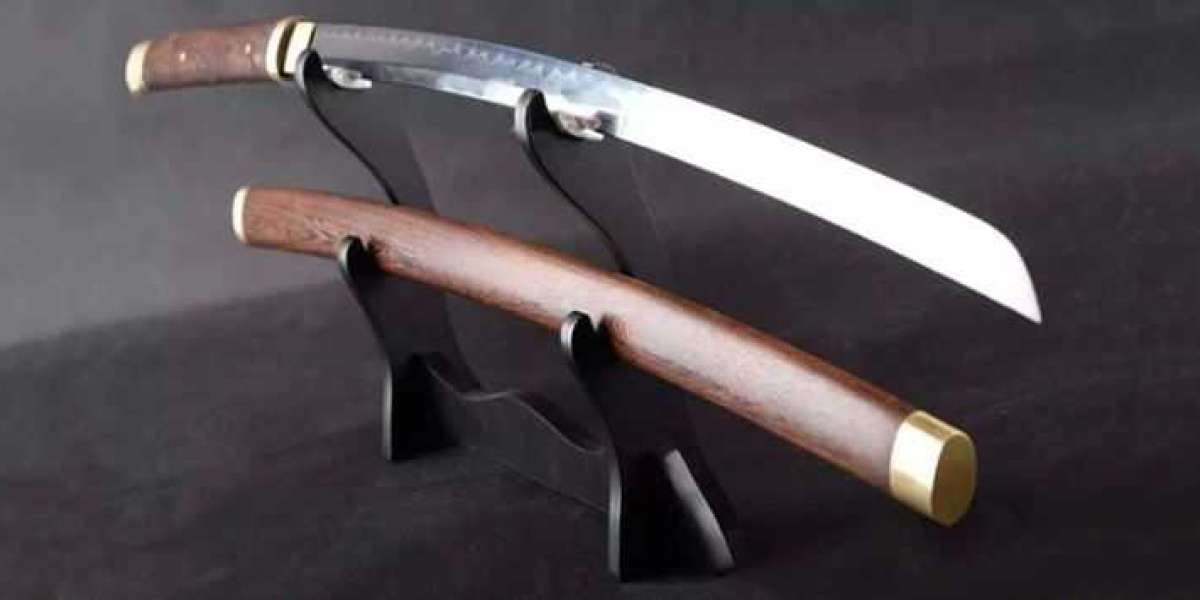The katana is one of the most iconic weapons in history, celebrated not only as a tool of war but also as a work of art that embodies the spirit of Japan’s samurai. Known for its distinctive curved blade, long grip, and unmatched sharpness, the katana has fascinated collectors, martial artists, and historians for centuries. Its legend is deeply intertwined with the samurai code of Bushido, where the sword was considered the soul of the warrior katana samurai sworda.
In this guide, we will explore the design, maintenance, and artistry behind authentic Japanese katanas so you can truly understand what makes these swords unique and worthy of respect.
The Design of an Authentic Japanese Katana
Blade Structure and Shape
The katana’s most recognizable feature is its gently curved, single-edged blade, typically measuring between 60–80 cm (23–31 inches). The curvature, called sori, is not merely for aesthetics—it allows for more efficient cutting by aligning the sword’s movement with the arc of the wielder’s swing.
The blade is forged from high-carbon steel, traditionally known as tamahagane, which is created from iron sand smelted in a clay furnace called a tatara. This steel undergoes repeated folding to remove impurities and create distinctive grain patterns called hada.
Differential Hardening and the Hamon
One of the most artistic and functional aspects of a katana is the hamon, a visible temper line along the blade. It is created through a process called differential hardening, where the edge is coated with a thin layer of clay and the spine with a thicker layer before quenching. This method hardens the edge for sharpness while leaving the spine flexible, preventing breakage during battle.
Each swordsmith has a signature hamon style, making every authentic katana a unique masterpiece.
The Tang (Nakago)
The tang is the part of the blade that extends into the handle. Authentic katanas have a full tang for durability, with the smith’s signature (mei) engraved onto it. This is a key detail collectors look for when verifying authenticity.
The Mountings (Koshirae)
An authentic katana’s mountings are as important as the blade itself:
Tsuka (Handle): Wrapped in silk or cotton over ray skin for grip and comfort.
Tsuba (Hand Guard): Decorative yet functional, preventing the hand from sliding onto the blade.
Saya (Scabbard): Made from lacquered wood, often with intricate designs.
The Artistry Behind Katanas
The Swordsmith’s Craft
Creating a true katana is an art form passed down through generations. Traditional swordsmiths in Japan still use centuries-old techniques, often taking months to complete a single blade. This dedication ensures that the sword is not only a weapon but also a symbol of cultural heritage.
Swordsmiths must be licensed in Japan, and authentic swords are registered under Japanese law as cultural property. This protects the artistry and prevents mass-produced imitations from diluting the tradition.
Decorative Elements
Every part of the katana can be a canvas for artistry:
The tsuba may feature motifs of nature, mythology, or historical events.
The menuki (ornamental grip decorations) often carry symbolic meanings.
The lacquer work on the saya can showcase a sword owner’s personality and status.
Authentic katanas often have subtle beauty—refined elegance rather than excessive decoration—reflecting the samurai ideal of humility and discipline.
How to Maintain a Katana
Owning an authentic katana comes with responsibility. Proper maintenance not only preserves its beauty but also its functionality.
Cleaning the Blade
Traditional katana maintenance involves a sword care kit that typically includes:
Uchiko Ball: A silk ball filled with fine polishing powder to remove old oil.
Choji Oil: A special clove oil mixture that prevents rust.
Nuguigami: Soft rice paper for wiping the blade.
The process involves wiping off the old oil, applying a small amount of uchiko powder, wiping it clean, and then applying fresh oil to protect the steel.
Avoiding Damage
Never touch the blade with bare fingers, as skin oils can cause rust.
Store the katana in its saya when not in use.
Keep it in a dry environment, away from direct sunlight and humidity.
Regular Inspections
Collectors and martial artists should inspect their swords periodically for any signs of rust, cracks, or loose fittings. Prompt attention prevents long-term damage.
Recognizing Authentic Japanese Katanas
With the growing popularity of samurai swords, the market is full of replicas. While some replicas are excellent for training or display, they lack the historical and artistic value of an authentic Japanese katana.
Key Signs of Authenticity
Tamahagane Steel: Look for the distinctive grain pattern (hada) and hamon created through traditional forging.
Full Tang Construction: The blade should extend the full length of the handle.
Smith’s Signature: Genuine katanas are signed by the swordsmith on the nakago.
Certificate of Authenticity: In Japan, registered swords come with official papers from the NBTHK (Society for the Preservation of Japanese Art Swords).
If in doubt, consult an expert before making a purchase—especially when dealing with high-value antiques.
Modern Use of Katanas
Martial Arts
Many practitioners of Kendo, Iaido, and Kenjutsu still train with live-blade katanas (shinken) or blunt training swords (iaito). The katana’s balance and cutting ability make it ideal for practicing traditional sword techniques.
Collecting and Display
Collectors value katanas not just as weapons but as fine art. A high-quality katana can be a centerpiece in a home or office, often displayed on a katana kake (sword stand) to highlight its elegance.
Ceremonial and Cultural Symbolism
Even in modern Japan, katanas hold cultural significance. They are presented as gifts during important ceremonies and symbolize honor, loyalty, and courage.
The Timeless Appeal of the Katana
The katana’s enduring appeal lies in its combination of deadly efficiency and breathtaking beauty. It represents the perfect harmony between form and function—a weapon honed for battle yet crafted with an artist’s care.
From the way the steel is folded to the intricate design of the fittings, every detail tells a story of dedication, tradition, and respect for the craft. For samurai, the katana was more than a weapon—it was a part of their identity, an extension of their soul.
Conclusion
The katana is not just a sword—it is a masterpiece of Japanese heritage. Its design reflects centuries of refinement, its maintenance demands discipline, and its artistry speaks of a culture that valued both strength and beauty. Whether you are a martial artist, a collector, or simply an admirer of fine craftsmanship, understanding the true nature of an authentic Japanese katana deepens your appreciation for one of history’s most legendary weapons.


